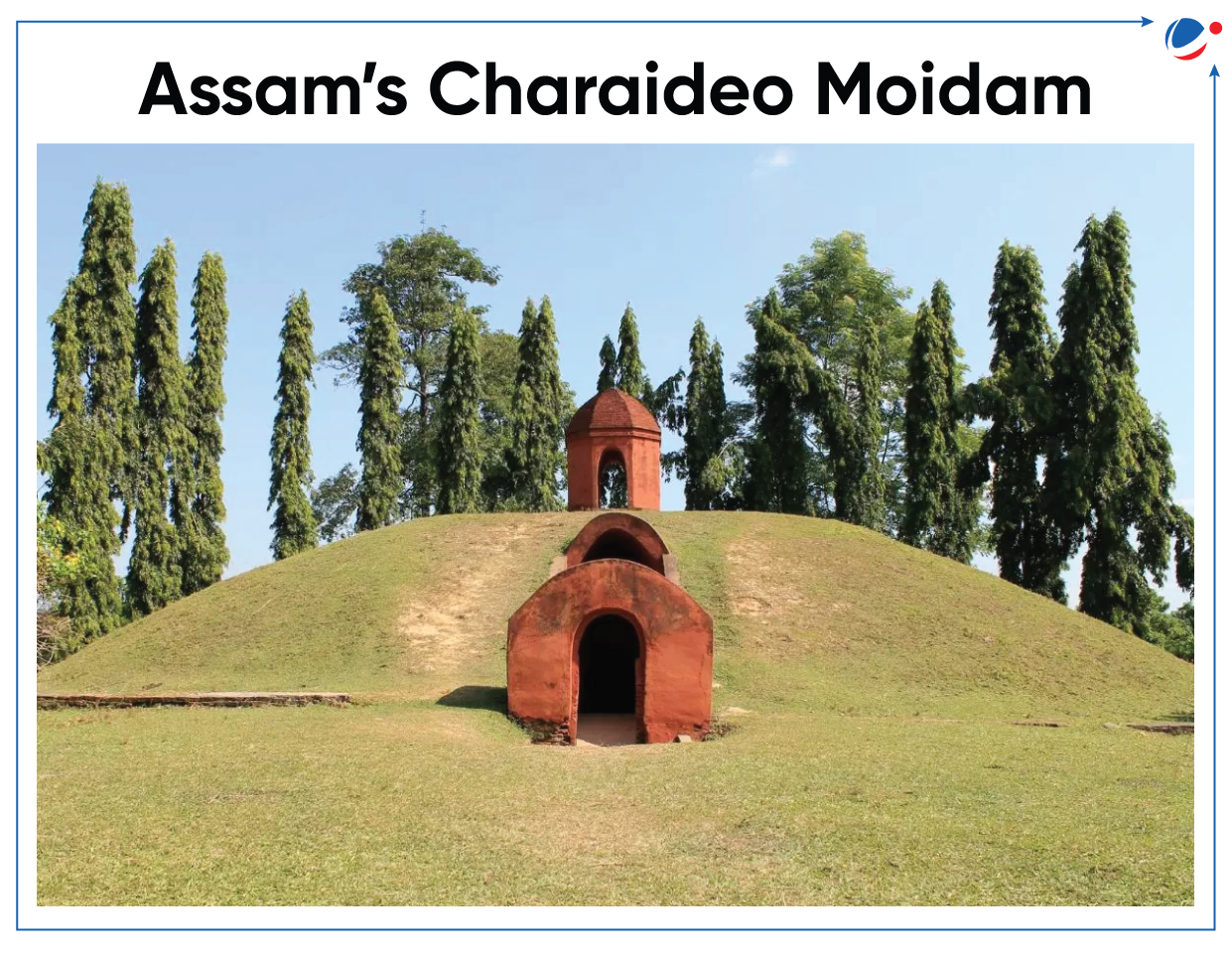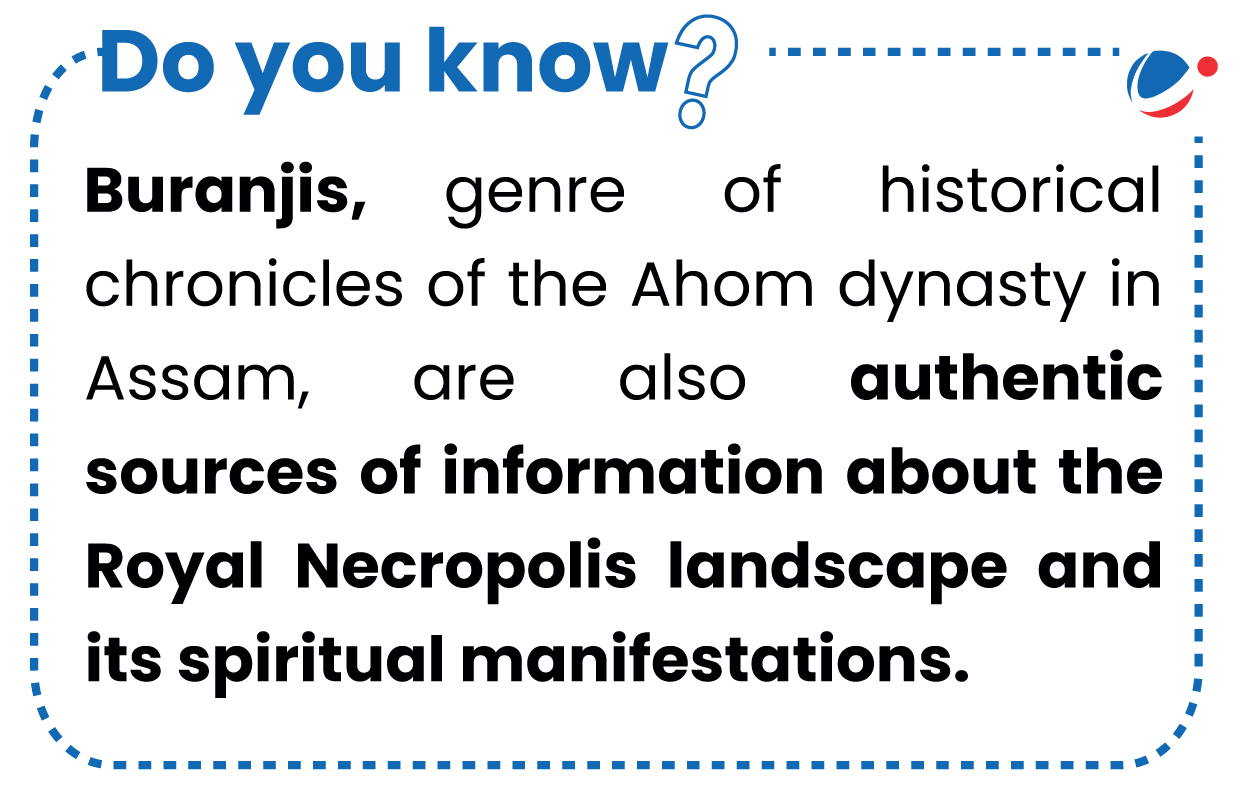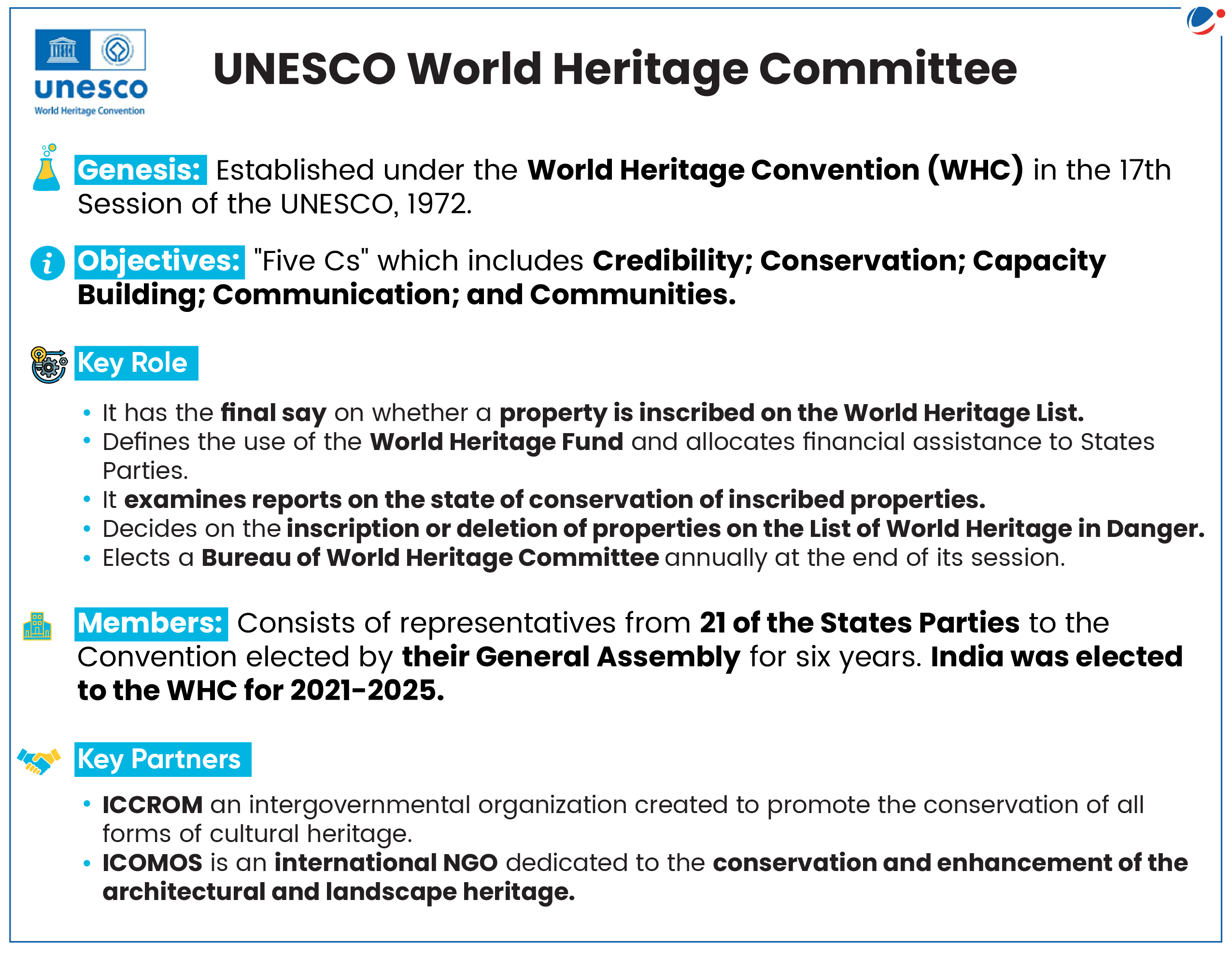Why in the News?
Assam's Charaideo Moidam was officially inscribed on the United Nations Educational, Scientific and Cultural Organization (UNESCO) World Heritage List.
More on the News
- The decision was taken during the 46th World Heritage Committee (WHC) session in Delhi.
- Moidams (or Maidams) in Assam's Charaideo district were recommended for inclusion in the UNESCO World Heritage List under the cultural property category by International Council on Monuments and Sites (ICOMOS).
- It is the first time a site from the North East has made it to the UNESCO World Heritage List under the Cultural Category.
- World Heritage Site status boosts awareness, enhances preservation efforts, and may attract financial and expert support for site conservation.
- India's total UNESCO World Heritage sites now stand at 43 with 3 being in Assam (including Kaziranga National Park and Manas National Park).
Other Indian Initiatives at the 46th SessionFor the first time India hosted the meeting of WHC. It announced following initiatives also:
|
About Charaideo's Moidams

- Locations: In the foothills of the Patkai Ranges, eastern Assam.
- Royal Necropolis: Charaideo is home to the royal necropolis of the Tai-Ahom dynasty (13th–19th century CE) and are comparable the Egyptian Pyramids.
- Moidam means 'Home for Spirit' and it symbolizes heaven- earth continuum.
- Architectural Features: Banyan trees and the trees used for coffins and bark manuscripts were planted and water bodies were created near Moidams. Each Moidam consists of:
- An earthen mound (Ga-Moidam) topped by a central shrine (Chou Cha Li)
- An octagonal wall (Garh) symbolizing the Tai universe
- A brick-and-stone vault (Tak) with a grave pit (Garvha)
- Protection Officers: During Ahom's reign, Moidams were protected by special officers called Moidam Phukans and a guard group known as Moidamiya.
- Insights in Afterlife Belief: Moidams have grave goods such as food, horses, elephants, and sometimes even servants (items they would require in their afterlife).

- Burial Practices: The site reveals two distinct burial practices. During pre-17th century CE bodies were embalmed and entombed and later cremated ashes were buried.
- This evolution in burial practices provides critical evidence of the Tai-Ahoms' localization process over time.
- Cultural continuity: Annual rituals such as Me-Dam-Me-Phi (ancestor worship) and Tarpan (libation ceremony) are still performed, maintaining a 600-year-old tradition.
- Discovery: The earliest sketch of the ground plan of a Moidam was published in the journal of the Asiatic Society of Bengal, in 1848 by Sergeant C. Clayton
Features that Make Charaideo's Moidams Exceptional
- Well preserved: While Moidams are found in other areas within the Brahmaputra Valley, those found at the Charaideo are regarded as exceptional and are well preserved.
- Advanced Engineering: Moidams' stable structure, engineering of the vault, and use of water to buffer seismic impact highlight Ahom's engineering skills.
- Cultural Transition: With the influence of Hinduism, the Ahoms also started to cremate their dead. Yet, this burial system is still practised by the priestly sections of the Ahoms and the Royal bodyguards clan.
Other Burial Practices in India
Period/Practice | Features |
Harappan Civilization |
|
Megalith |
|





